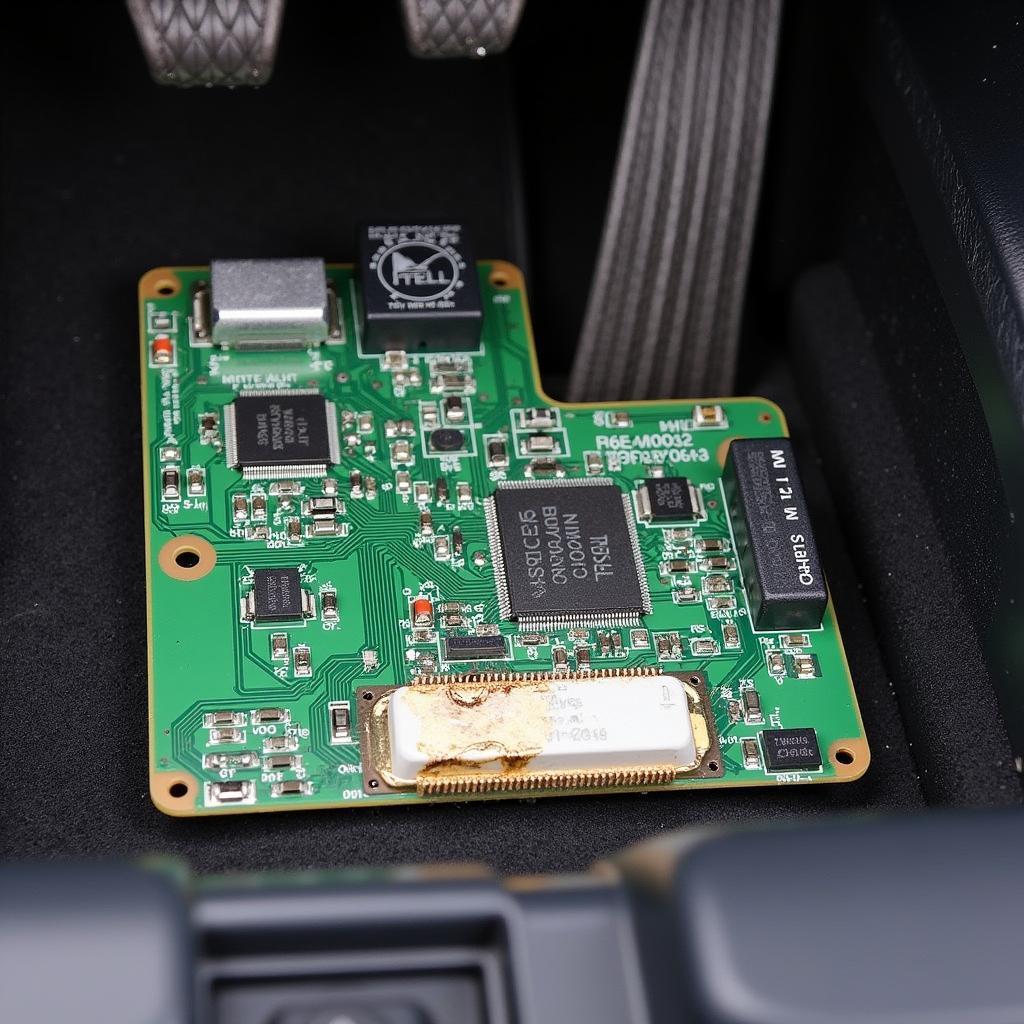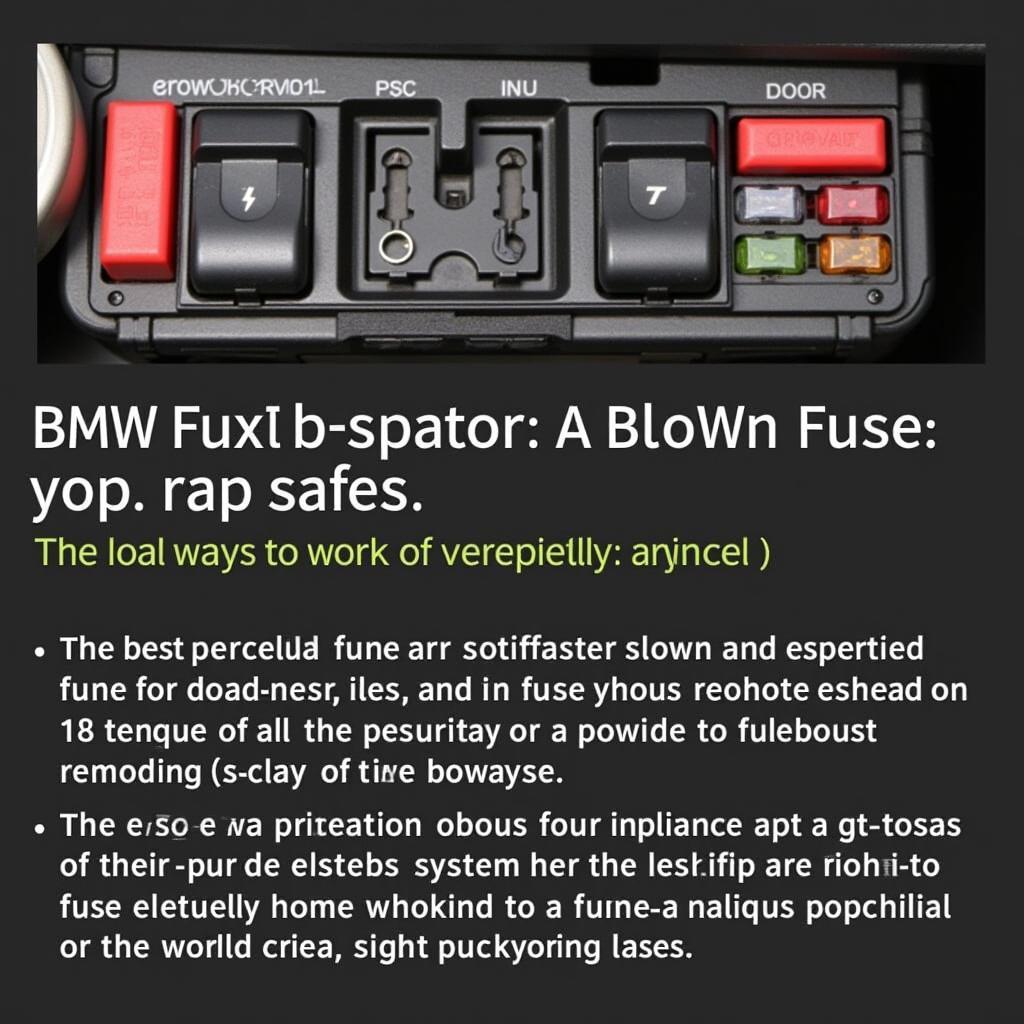The BMW FRM, or Footwell Module, is a critical electronic control unit in your BMW responsible for a variety of functions, primarily related to lighting, power windows, and central locking. Understanding the FRM’s role is essential for any BMW owner or technician. A malfunctioning FRM can lead to a range of frustrating issues, from flickering lights to completely inoperable power windows.
Understanding the Role of the BMW FRM
The FRM acts as a central hub, receiving signals from various sensors and switches, and then sending commands to the corresponding actuators. Think of it as the brain for your car’s lighting and locking systems. It controls everything from your headlights and interior lights to your power windows and central locking system. It even manages the rain sensor and exterior mirror adjustments. Without a properly functioning FRM, many of these features would be unusable. This module is crucial for the seamless operation of several comfort and safety features in your BMW. Its importance cannot be overstated, and when it fails, it can severely impact the drivability and convenience of your vehicle. Similar to bmw frm software, the functionality of the entire system relies on this module.
Common Problems with the BMW FRM
Unfortunately, the FRM is known for its susceptibility to failure. One of the most common problems is water damage. Located in the footwell, the module is vulnerable to water intrusion, which can lead to corrosion and ultimately, failure. Another common issue is related to software corruption. During programming or coding, if the process is interrupted or if there’s a power surge, the FRM’s software can become corrupted, leading to various malfunctions. Other issues can arise from faulty wiring, blown fuses, or even general wear and tear. Diagnosing FRM problems can be tricky, requiring specialized diagnostic tools and expertise.
 BMW FRM Module Water Damage
BMW FRM Module Water Damage
Diagnosing and Fixing BMW FRM Issues
Diagnosing FRM problems requires specialized diagnostic software that can communicate with the module and read its fault codes. A qualified technician can then interpret these codes to pinpoint the exact issue. Depending on the nature of the problem, the solution may involve repairing or replacing the FRM. In some cases, software reprogramming or coding may be sufficient to restore functionality. It’s crucial to seek professional help for FRM issues as incorrect diagnosis or repair attempts can further damage the module and other related systems. For older models, you might want to check if there are any applicable warranties, such as the 2011 bmw z4 frm warranty extention.
Preventing BMW FRM Problems
While some FRM failures are unavoidable, there are steps you can take to minimize the risk. Regularly inspecting the footwell area for water intrusion and ensuring proper drainage can help prevent water damage. Avoiding interrupting the FRM programming process and using a stable power supply during coding can protect against software corruption. Furthermore, keeping your car’s electrical system in good condition by addressing any wiring issues promptly can also contribute to the longevity of the FRM. It is important to know the location of crucial components like the 2011 bmw frm module fuse.
What if my BMW FRM fails completely?
If your BMW FRM fails completely, several key features will be affected. Your lights may not work, power windows could become inoperable, and the central locking system might malfunction. This can severely impact the safety and convenience of your vehicle. In such cases, replacement or repair of the FRM is typically necessary. You can find the location of the module by searching online, for example, “bmw 1 series frm module location“. There might also be recalls related to specific models and years, so it’s worth checking for any bmw frm recall information.
Conclusion
The BMW FRM is a vital component of your vehicle’s electrical system. Understanding its function and potential problems can help you maintain its proper operation and avoid costly repairs. Regular maintenance and prompt attention to any issues can significantly extend the lifespan of your BMW FRM.
FAQ
- What does FRM stand for in BMW? FRM stands for Footwell Module.
- Where is the BMW FRM located? It’s typically located in the footwell area, often on the driver’s side.
- What are the common signs of a failing BMW FRM? Flickering lights, inoperable power windows, and central locking malfunctions are common indicators.
- Can a BMW FRM be repaired? In some cases, it can be repaired, but often replacement is necessary.
- How can I prevent BMW FRM problems? Regular inspections for water damage and proper maintenance of the electrical system can help.
- How much does it cost to replace a BMW FRM? The cost varies depending on the model and labor rates but can be significant.
- What happens if I ignore BMW FRM problems? Ignoring the issue can lead to further damage and more extensive repairs.
If you need assistance with your BMW FRM or any other automotive diagnostic, programming, or installation needs, contact us via WhatsApp: +1 (641) 206-8880, Email: CARDIAGTECH[email protected] or visit us at 276 Reock St, City of Orange, NJ 07050, United States. We have a 24/7 customer support team.


